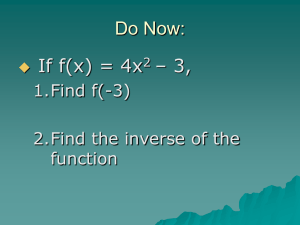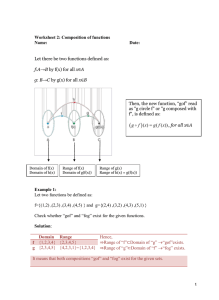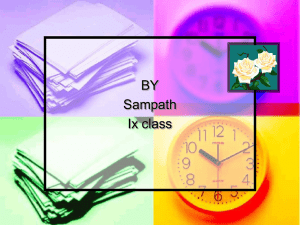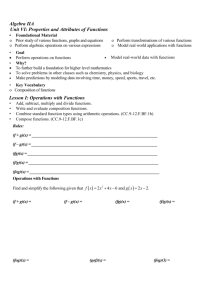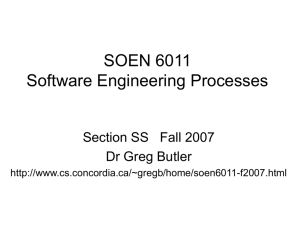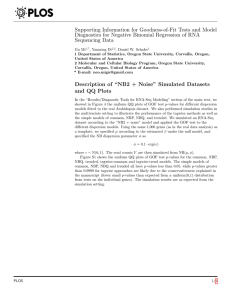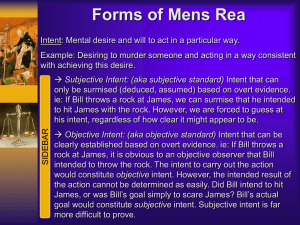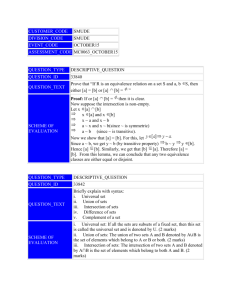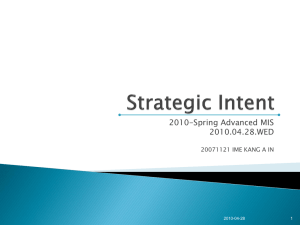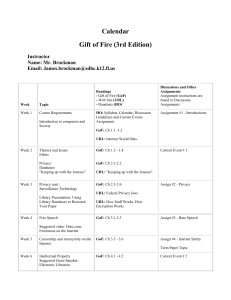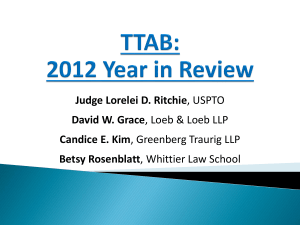Design Patterns - TAMU Computer Science Faculty Pages
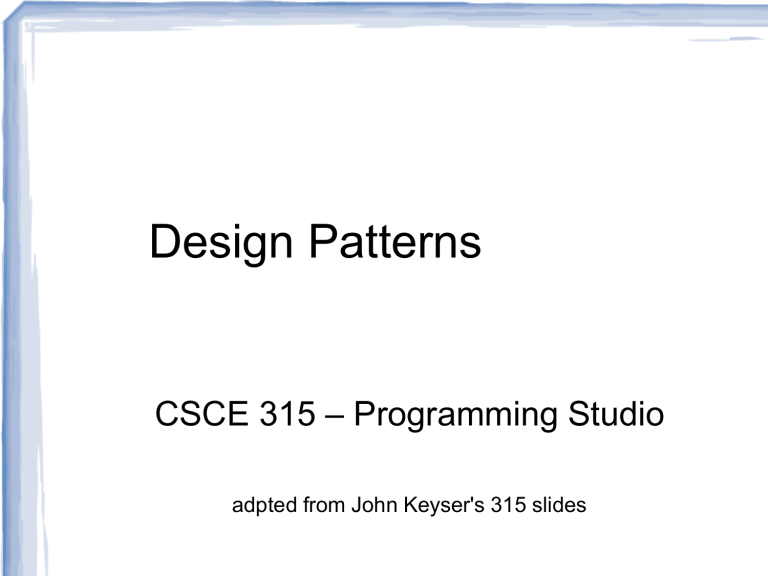
Design Patterns
CSCE 315 – Programming Studio adpted from John Keyser's 315 slides
Design Patterns in General
When designing in some field, often the same general type of problems are encountered
Usually, there are a set of ways that are “good” for handling such design problems
Rather than reinventing these good solutions, it would be helpful to have a way to recognize the design problem, and know what good solutions to it would tend to be (or already exist!).
In architecture, a 1977 book, A Pattern Language ,
Christopher Alexander et al. introduced the idea of a way of describing design solutions
Pattern Language
The idea is to describe how good design is achieved for a field
Ideas that are “settled” and well understood are good
Key aspects of a pattern language include:
Identifying common, general (somewhat abstract) problems.
Finding common “good” ways of addressing these problems
Giving names to these solutions (patterns)
Identification, understanding, communication
Giving description of the patterns:
When and how to apply it
What the effects of applying it are
How it interacts with other patterns
Design Patterns in
Computer Science
The idea developed over time, but became popular with Design Patterns: Elements of Reusable Object-
Oriented Software by Erich Gamma, Richard Helm,
Ralph Johnson, John Vlissides, published in 1995.
Authors often called the “Gang of Four”, and the book sometimes called the GoF book
Closely tied to Object-Oriented Programming, although the principles are not limited to OOP
Design Pattern Elements
Pattern name
A meaningful reference to the pattern
Problem
When to apply the pattern
Solution
What is involved in the pattern (relationship between parts, and their responsibilities)
Consequences
Results and tradeoffs
Design Pattern
Descriptions (GoF)
Intent
Also Known As
Motivation (scenario)
Applicability (when to use)
Structure (diagram of how it works)
Participants (other things it uses)
Collaborations (how it interacts with other stuff)
Consequences (results and tradeoffs)
Implementation (Pitfalls/hints/techniques)
Sample Code
Known Uses (examples in real systems)
Related Patterns (closely related design patterns)
Organizing Patterns
Several Classification Schemes
Purpose
Scope (objects vs. classes)
Relationships
Functional (grouping similar ones)
etc.
Purposes of Design Patterns
Creational
Deal with object creation
Structural
Deal with how objects/classes are composed
Behavioral
Deal with how classes/objects interact
Others for specific domains
e.g. Concurrency
e.g. User interface
Example Creational:
Factory Method
Intent: Define an interface for creating an object, but let subclasses decide which class to instantiate.
Defers instantiation to subclasses.
Allows code to work with an interface, not the underlying concrete product
Can be abstract (no default), or provide a default that is overridden by subclasses
Allows subclasses to specialize and replace the default implementation
Example
Instead of:
Book* Publisher::CreateBook() {
Book* aBook = new Book();
Chapter* c1 = new Chapter(1);
Chapter* c2 = new Chapter(2);
} aBook->addChapter(c1); aBook->addChapter(c2);
Example
Use:
Book* Publisher::CreateBook() {
Book* aBook = makeBook();
Chapter* c1 = makeChapter(1);
Chapter* c2 = makeChapter(2);
} aBook->addChapter(c1); aBook->addChapter(c2);
Example Structural:
Adapter
aka Wrapper
Intent: Convert the interface of a class into another interface clients expect.
Adapter lets classes work together that couldn’t otherwise because of incompatible interfaces.
Example: Interface to
DBEngine+Parser
Example Structural:
Composite
Intent: Compose objects into tree structures to represent part-whole hierarchies. Composite lets clients treat individual objects and compositions of objects uniformly.
Composite could be a “leaf” (basic object), in which case, it behaves just like that object
Composite could be a combination of other objects in a hierarchy. Performs some general operations, then usually calls children
Example: translating an object (or group of objects) in computer graphics
Example Behavioral:
Iterator
Intent: Provide a way to access the elements of an aggregate object sequentially without exposing its underlying representation
Note: does not assume that there is a
“true” sequential ordering
Examples: tree traversal in preorder, postorder, inorder; records returned by
DB query.
Example Behavioral:
Observer
Intent: Define a one-to-many dependency between objects so that when one object changes state, all its dependents are notified and updated automatically.
Example: multiple graph view of same data set (as bar chart, pie chart, etc.); graphs update when base data changes
Usually attach/detach observers from a subject
Observers get called whenever subject changes
Subject does not have to worry about how the observers work, it just calls a “notify” to each of them.
Patterns (GoF book)
Creational:
Abstract Factory
Builder
Factory Method
Prototype
Singleton
Patterns (GOF book)
Structural:
Adapter
Bridge
Composite
Decorator
Façade
Flyweight
Proxy
Patterns (GOF book)
Behavioral:
Chain of Responsibility
Command
Interpreter
Iterator
Mediator
Memento
Observer
State
Strategy
Template Method
Visitor
Summary
Many patterns out there
But, a key to usefulness is being commonly recognized
Takes experience and practice to get used to identifying/using them
